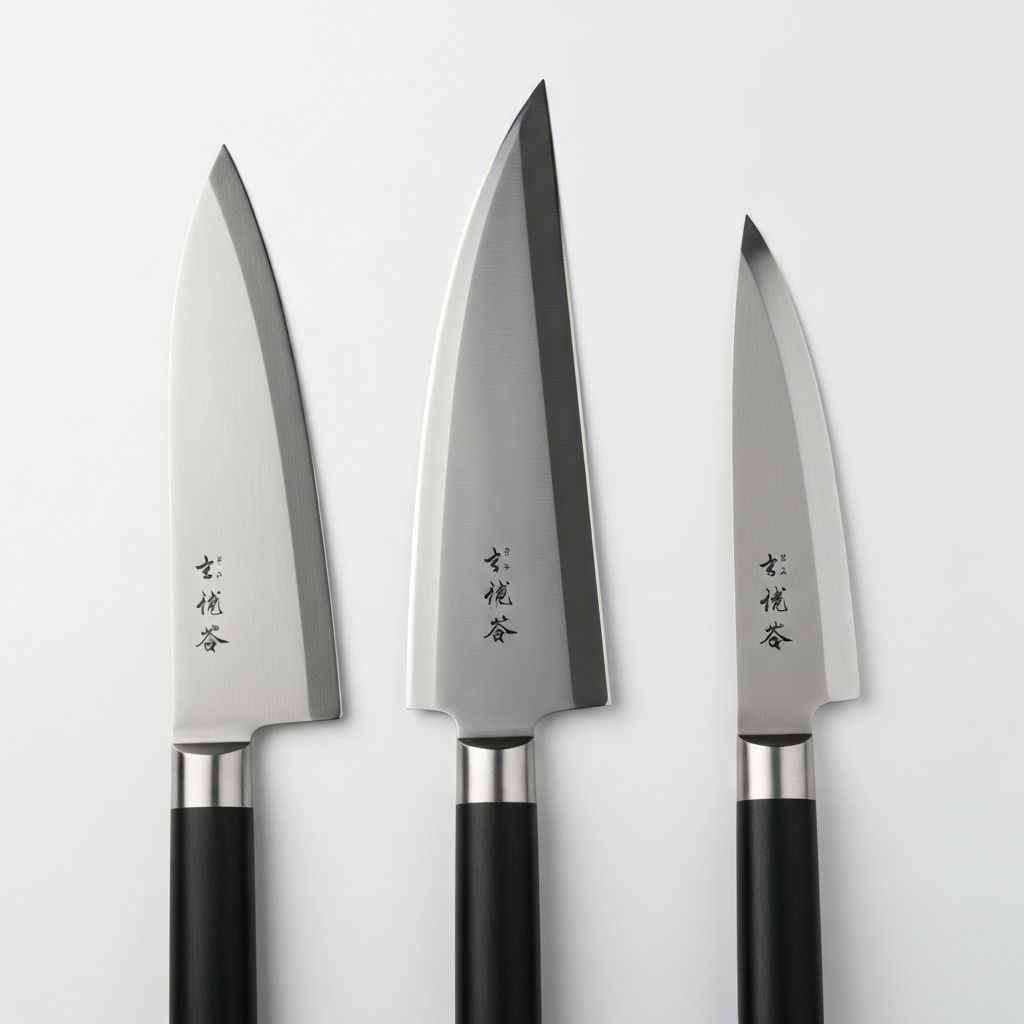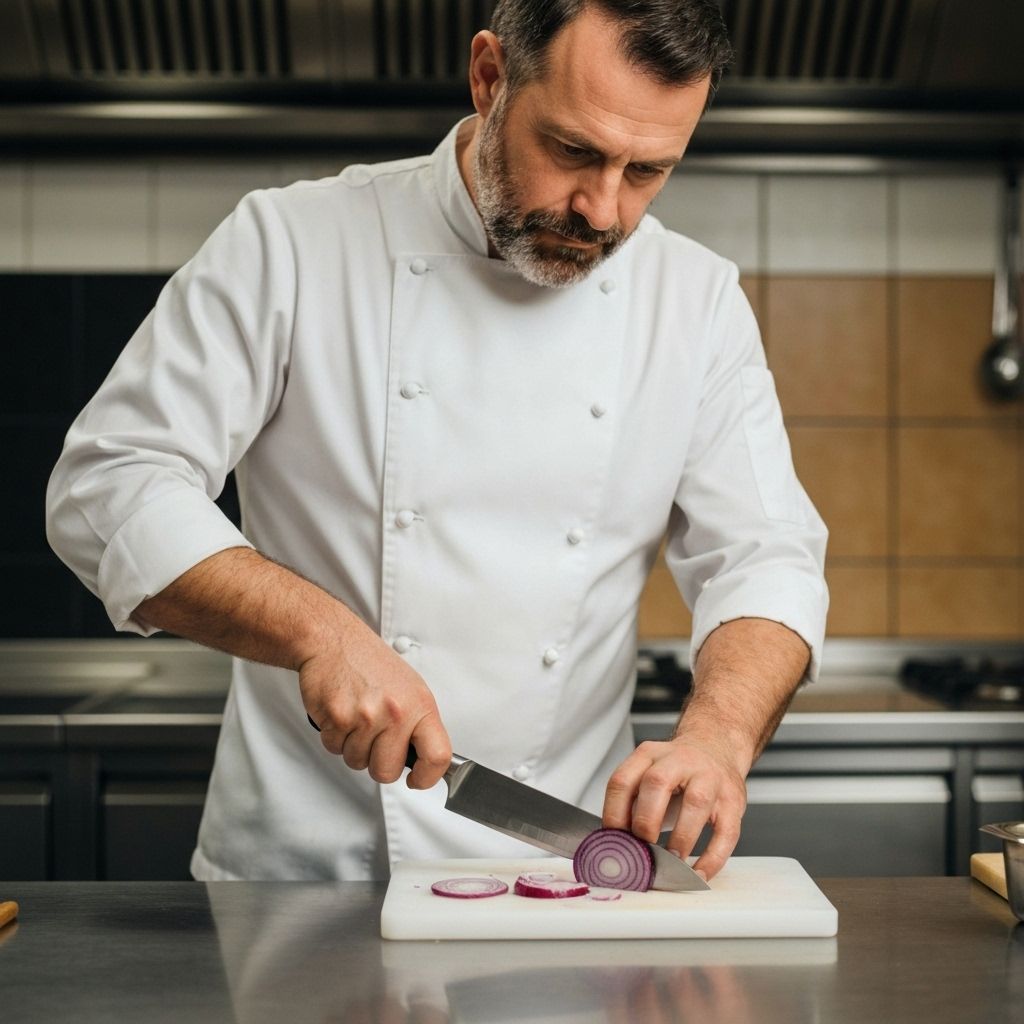Japanese Kitchen Knives: Understanding Santoku, Gyuto, and Nakiri
Explore the distinct characteristics and optimal uses of Japan's three most popular kitchen knife styles for home cooks.
- Answer the main question in one sentence.
- Give the best pick and why in one line.
- Link to the product or guide for next step.

Japanese knife design reflects centuries of culinary tradition and metallurgical expertise. Three styles dominate modern kitchens: the versatile Santoku, the chef's knife-like Gyuto, and the vegetable-focused Nakiri. Understanding their differences enables strategic selection for your cooking style.
The Santoku, meaning "three virtues," excels at slicing, dicing, and mincing. Its 16-18cm (6.5-7 inch) blade features a gentle curve ending in a sheep's foot tip where the spine curves down to meet the edge. This design enables a forward-chop motion rather than the rocking cuts typical of Western chef's knives.
The broad blade provides knuckle clearance during rapid chopping, while the fine edge glides through vegetables, meat, and fish with minimal resistance. Many Santoku blades feature granton edges—small divots that create air pockets, reducing food adhesion during slicing. This proves particularly valuable when cutting sticky foods like cheese or potato.
Gyuto knives represent Japan's interpretation of Western chef's knives. The name translates to "cow blade," reflecting their original purpose for processing meat. Modern Gyuto knives serve as versatile all-purpose tools, featuring longer blades (20-27cm/8-10.5 inches) with pronounced curves that enable rocking cuts.
The thinner, harder blade compared to Western equivalents provides superior edge retention and cutting performance. The acute edge angle (typically 15 degrees per side versus 20 degrees for Western knives) creates exceptional sharpness but requires more careful use and maintenance. This trade-off appeals to cooks prioritizing cutting performance over durability.
Nakiri knives specialize in vegetable preparation. The rectangular blade with straight edge allows the entire cutting surface to contact the board simultaneously, enabling precise, uniform cuts with a straight up-and-down motion. This design excels at tasks like julienning carrots, slicing rounds, or creating paper-thin vegetable sheets.
The thin blade minimizes wedging, allowing the knife to glide through dense vegetables without splitting or cracking them. The flat profile and squared tip enable scooping cut vegetables directly from the board. While specialized, the Nakiri transforms vegetable preparation for those who process significant quantities regularly.
// RELATED_ARTICLES

Laboratory Precision in the Kitchen: Advanced Weighing Techniques
Learn how precision measurement transforms cooking from art to science, enabling perfect reproducibility.

Fundamental Knife Skills: Precision Cuts for Professional Results
Master the essential cutting techniques that form the foundation of professional culinary practice.